1 day, 3 ways: Nice
The pearl of the French Riviera has drawn travellers for centuries – and its beauty is as lustrous as ever. The largest city on the Cote D’Azur is also the most popular French tourist destination after Paris. Nestled between the Mediterranean and the Alps, its setting is unsurpassed. To the east lie Monaco and Italy;
The pearl of the French Riviera has drawn travellers for centuries – and its beauty is as lustrous as ever.
The largest city on the Cote D’Azur is also the most popular French tourist destination after Paris. Nestled between the Mediterranean and the Alps, its setting is unsurpassed. To the east lie Monaco and Italy; to the west are Cannes and St Tropez.
Depending on your ship, you’ll explore this ancient city from one of two spots. Smaller vessels dock at Le Port in the heart of the Old City, while larger ones anchor in neighbouring Villefranche Bay, tendering passengers to picturesque Villefranche-sur-Mer (where the Rolling Stones recorded their classic album Exile on Main Street).
Known today as “Nice la Belle”, the city was founded by ancient Greek settlers who named it after Nike, the goddess of victory. This fabulous place is now a magnet for the international super-rich – but you don’t need to be a billionaire to spend a memorable day here.
1. FAMILY FUN
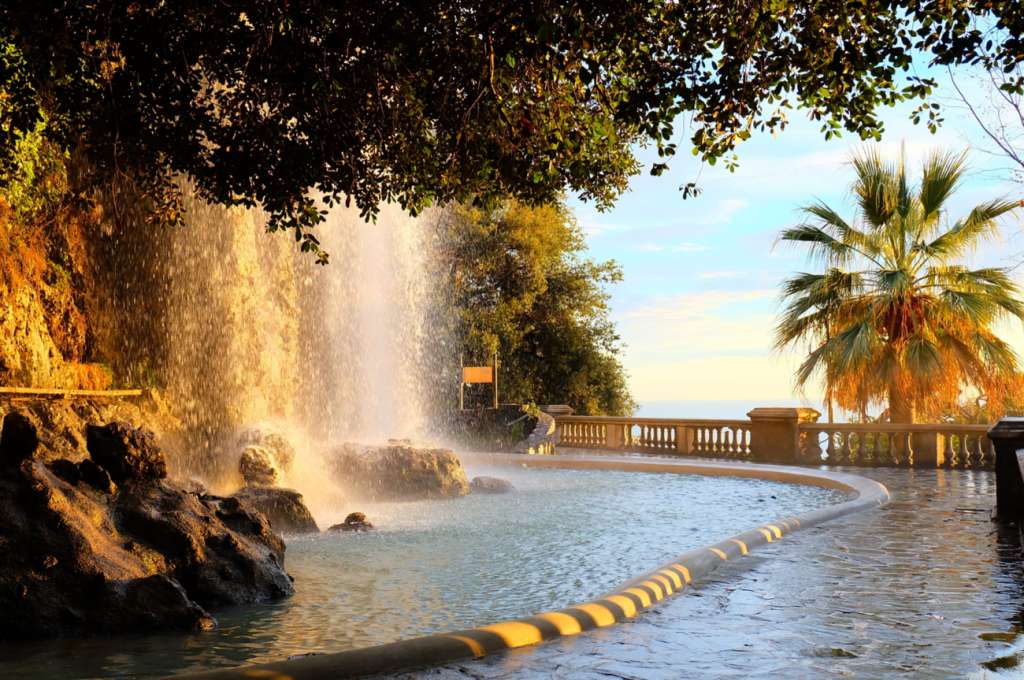
09:30 If your children are old enough to ride a bike, book places on the Nice City Cycle Tour, a three-hour introduction to the most important sites, which begins at 10 am (for younger ones you can request cycles with child seats).
Most of the route is smooth and gentle, though you’ll need to pedal hard to climb Colline du Chateau (Castle Hill). Once you’ve made the ascent, you’ll be rewarded with one of the most breathtaking panoramas in the whole Mediterranean.
On this trip you’ll visit the obvious attractions – Promenade des Anglais, Place Masséna, Place Garibaldi and Vielle Nice (the Old Town) – but you’ll also discover hidden churches, gardens and fountains that bus-bound visitors never see.
13:30 After all that exertion, the whole family deserves a rest over lunch – and Nice is one of the greatest gastronomic cities on earth, so the opportunities are almost endless. If it’s a sunny day – and it usually is – head for the Old Town, that rabbit warren of medieval streets below Castle Hill.
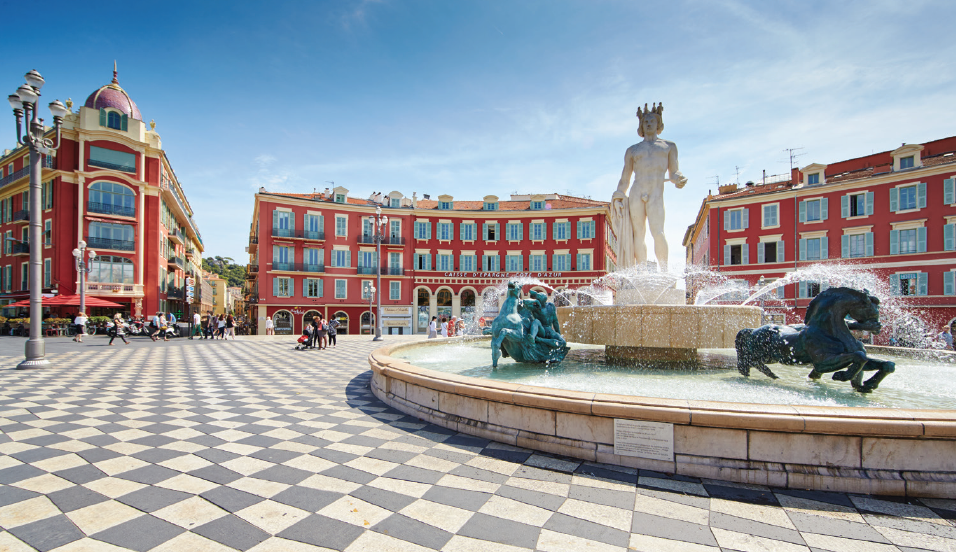
You’ll that find most cuisines are represented here, but do yourself a favour and pick a restaurant with outdoor tables that advertises “Niçoise” specialities. These include not just the famous salade (a 19th-century peasant dish that Delia Smith calls “one of the best combinations ever invented”) but seafood (especially tuna), ratatouille and – my favourite – the bean soup known as soupe au pistou.
15:30 Nice is one of the most famous beach resorts on the planet but the beach itself is… well, lay your towel on those uncomfortable pebbles – known as galets – and you’ll soon see what I mean.
The beaches at Antibes to the west and Villefranche to the east are kinder to the toes and the posterior, but they’re probably out of range. No matter – Nice has been a playground of the rich, the famous and the photogenic for more than 200 years, so while there may not be sand, there is plenty of stardust.
To round off your day, I suggest you slip on those Raybans, imagine yourself dodging the paparazzi, and take the family for a dip in those beautiful, warm, almost permanently blue waters.
THE BASICS
- Nice Cycle Tours, 22 euros per person. See nicecycletours.com
- Nice Cote d’Azur Tourism runs three English-language tourist offices in the city, and offers a 24-hour French Riviera Pass (price 26 euros) which gives access to many of the most popular sites. See en.nicetourisme.com
2. FIRST TIME IN NICE?
09:00 According to locals, the best time to visit Colline du Chateau (Castle Hill) is in the early evening, so you can watch the sun set over Promenade des Anglais (English Promenade) and the Baie des Anges (Bay of Angels). This may not suit your sailing schedule, so head there early in the morning. If you’re feeling fi t, take the meandering stairs to the tree-lined park at the summit (92 metres above the sea below). Or hop aboard the mini-train known as the Ascenseur du Chateau. Either way, the views are spectacular.
Despite the name, there never was a castle here, but there are plenty of picturesque landmarks, including Tour Bellanda and a lovely artifi cial waterfall.
10:30 Immediately below Castle Hill lies Vieux Nice, a tightly packed labyrinth of cafes, restaurants, bars, shops and galleries that is a delight to explore at your own leisurely pace.
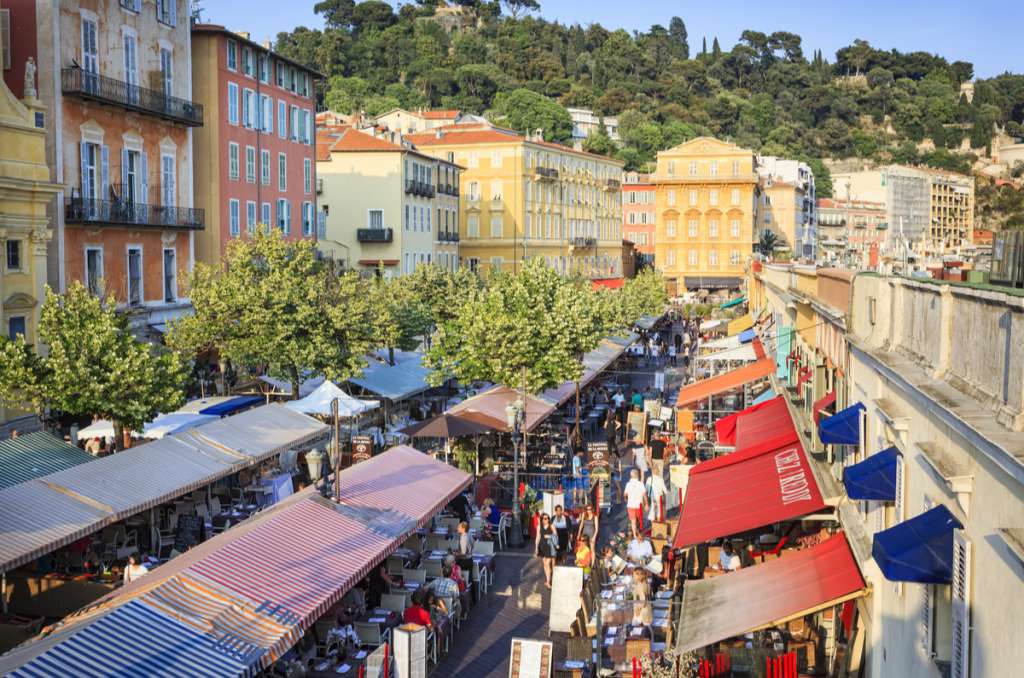
Be sure to visit Cours Saleya, the city’s colourful and historic flower and vegetable market (closed on Mondays), which is at its most theatrical in the morning.
11:30 Now stroll past the Hotel de Ville and Opéra to the Baie des Anges. As you head a few metres west, the Quai des Etats-Unis meets the Promenade des Anglais, Here, at the junction of these two beautiful beachside promenades, the underground river Paillon emerges into the Mediterranean.
Nice first became a popular resort with the British aristocracy in the 18th century, and it was they who funded the initial construction of the Promenade in the 1820s (hence “Anglais”).
Sadly, the Promenade will now always be remembered for the terrorist attack on Bastille Day last year, in which 86 people died. But it remains one of the most famous and glamorous streets in the world, and a great spot to sit and people-watch. The fashions aren’t quite as chic as they once were (it’s all “activewear” and handbag-sized dogs these days), but there is nowhere else quite like it in France.
12:15 Like most museums in Nice, Villa Masséna is free, and this imposing mansion at 35 Promenade des Anglais is packed with interest. The English-inspired gardens are delightful, but the museum’s main attraction is its superb introduction to the history of the French Riviera, from the time of Napoleon and Josephine to the present day.
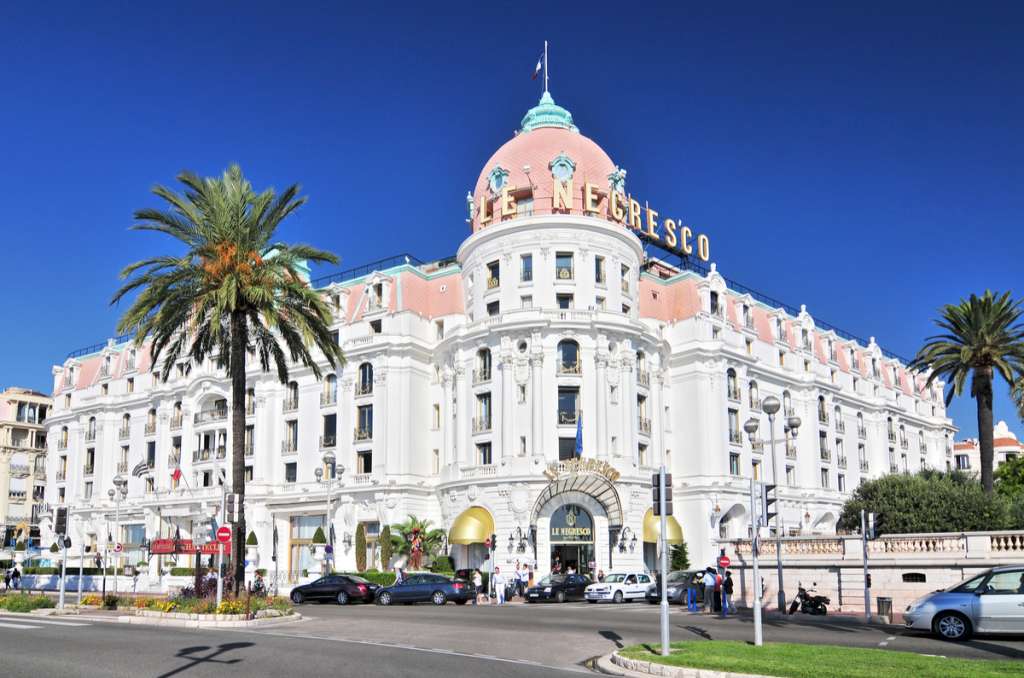
13:15 Next door to Villa Masséna is one of the world’s most celebrated hotels, the incomparable Negresco. If it looks a little bizarre from the street, with its famous pink dome, wait till you see inside (provided you can get past the perfectly pantalooned, plume-hatted, red-and-blue-coated doormen).
The notice outside declares that only guests may enter, but if you have a reservation for lunch, or you are “meeting someone in the bar”, you can get in. And you’ll be following in illustrious footsteps. Salvidor Dali was a frequent guest, sometimes with his pet leopards, and Michael Jackson came with his favourite chimpanzee. Much of the art that adorns the hotel was given by famous painters in lieu of payment for their bills. The hotel is also home to Le Chantecler, Nice’s only two-star Michelin restaurant.
This doesn’t open until the evening, but head chef Jean-Denis Rieubland also supervises the menu at Negresco’s La Rotonde brasserie, with its extraordinary decor of 18th-century carousel horses.
15:15 Take a taxi to Musée Matisse on Cimiez Hill. Arguably, Nice has more great galleries than any other French city apart from Paris. But if you only have time to visit one, Matisse is your man. He lived in Nice for the last four decades of his life, and this museum is a perfect introduction to his genius. While you’re there, take a glance at the Roman archaeological site next door.
16:30 As you take the cab back to your ship, look out for the Excelsior Regina Palace, an apartment block that was once of the grandest hotels in Europe. Queen Victoria stayed here in her final years, taking over the entire west wing, which still bears a crown on its facade.
17:00 If there’s still time before you need to board, get your taxi driver to take a detour via the Russian Orthodox Cathedral of Saint Nicholas. Regarded as the greatest cathedral of its style outside Russia, it was consecrated by Tsar Nicholas II in 1912, just five years before his family was executed in the Bolshevik Revolution.
THE BASICS
- Villa Masséna, 35 Promenade des Anglais. Admission free. See en.nice tourisme.com
- Hotel Negresco, 37 Promenade des Anglais. See hotel-negresco-nice.com
- Musée Matisse, 164 Avenue des Arènes de Cimiez. Admission 10 euros. See musee-matisse-nice.org
- Cathedral of Saint Nicholas, Avenue Nicholas II. Admission free. See en.nicetourisme.com
3. BEEN THERE? GO HERE!
CAP FERRAT
How comfortable are you driving on the right-hand side of the road? If you’re confident, you can hire a car, knowing that it’s barely six miles from Le Port to Cap Ferrat.
Little more than 150 years ago, this tiny peninsula was the home of impoverished fishermen and their families. You can still get a sense of the old fishing village if you take lunch overlooking the charming harbour of St-Jean-Cap-Ferrat, but today Cap Ferrat has some of the most expensive real estate in the world.
Prices began rising when the Belgian King Leopold II arrived (with some of his mistresses) at the beginning of the 20th century. Since then, such luminaries as Charlie Chaplin, Somerset Maugham, David Niven and Elton John have all had homes here, while others – including Noel Coward, Paul McCartney, Elizabeth Taylor and Frank Sinatra – have stayed at the magnificent Grand-Hotel du Cap-Ferrat.
If you’re feeling up to it, try the scenic walk around the peninsula. It might take you a couple of hours, but you will be rewarded with spectacular views and perhaps a bonjour or two from a passing billionaire.
MONTE CARLO
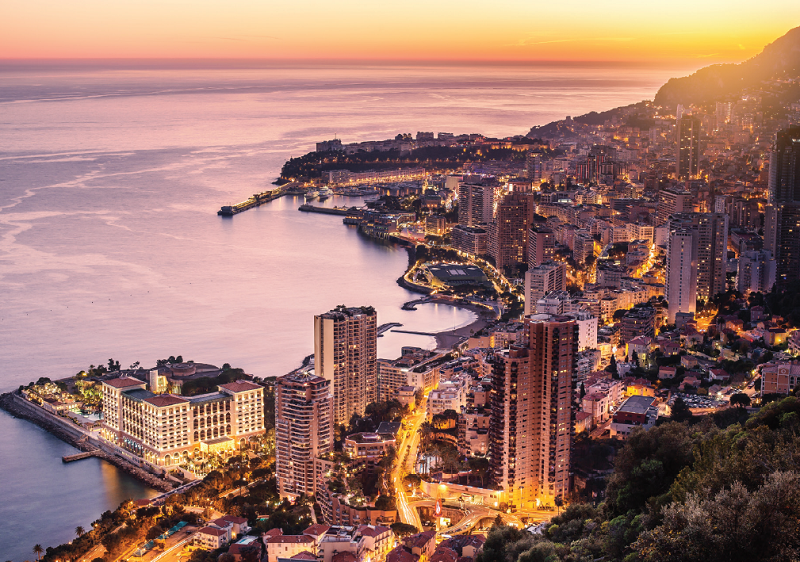
The principality is Monaco but the city that occupies just about every square metre of it is Monte Carlo – forever associated with fairytale romance, thanks to the wedding of Grace Kelly and Prince Rainier in 1956.The city’s setting is extraordinary. Mountain slopes rise almost straight from the pretty harbour, crowded with megayachts, that serves as a backdrop for the annual showpiece of the F1 Grand Prix calendar.
The city’s setting is extraordinary. Mountain slopes rise almost straight from the pretty harbour, crowded with megayachts, that serves as a backdrop for the annual showpiece of the F1 Grand Prix calendar.
If you’re feeling lucky, visit the famous Monte Carlo Casino (though note the strict dress-code: no shorts, trainers or flip-flops, and jackets recommended after 8pm). If you prefer to play your cards close to your chest (or not at all), just enjoy the drive from Nice to Monte Carlo and back. My tip is to take the coastal route to Monaco, follow the roads through Monte Carlo and choose the mountain road back, stopping at any restaurant with a view that takes your fancy.
SAINT-PAUL-DE-VENCE
A 30-minute drive from Nice, the mountaintop town of Saint-Paul-de-Vence is of the oldest and most beautiful medieval settlements anywhere on the French Riviera.
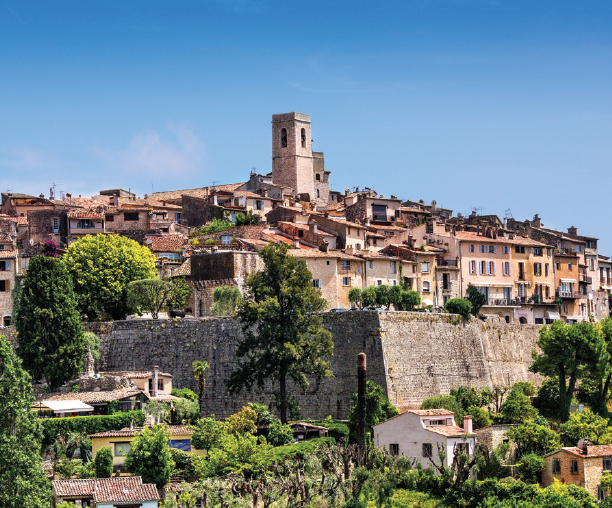
But today it is famous for two things: art galleries and expat celebrities. St Paul’s golden age came in the Fifties and Sixties, when stars were drawn here by the film studios in Nice and the festival at Cannes. Yves Montand and Simone Signoret led the way, along with Roger Moore, Donald Pleasance, and Bill Wyman of the Rolling Stones.
The US literary giant James Baldwin lived here for two decades, as did the painter Marc Chagall, and St Paul’s reputation has been further enhanced by the Maeght Foundation – a superb museum of modern art with work by 20th-century masters including Braque, Giacometti, Bonnard, Kandinsky and Miro.
Take time, too, to visit The White Penitents Chapel, a 17th-century church also known as the Folon Chapel because of its extraordinary painted interior.
Belgian artist and illustrator Jean-Michael Folon lived in Monaco for the last 20 years of his life, c0mpleting this multicoloured masterpiece shortly before his death in 2005. Made with the help of a team of local craftsmen, Folon’s assemblage of stained glass, sculptures and murals is simply inspiring in its beauty.
THE BASICS
- Fondation Maeght, 623 Chemin des Gardettes, St-Paul-de-Vence. Admission 15 euros. See fondationmaeght.com
- Chapelle Folon, Place de l’Eglise, St- Paul-de-Vence. Admission 4 euros.
Asian Wonders & Arabian Delights
- 20 nights, departs on the 05 Apr 2024
- Regent Seven Seas Cruises, Seven Seas Navigator
- Laem Chabang, Laem Chabang, Ko Samui, + 18 more
North Pacific Passage
- 18 nights, departs on the 13 Apr 2024
- Regent Seven Seas Cruises, Seven Seas Explorer
- Tokyo, Hitachinaka, Miyako, Iwate, + 16 more
Whale Watching Expedition
- 7 nights, departs on the 01 May 2024
- Regent Seven Seas Cruises, Seven Seas Explorer
- Vancouver, British Columbia, , Ketchikan, Alaska, + 5 more
Ocean Air & Spanish Flair
- 14 nights, departs on the 10 Apr 2024
- Regent Seven Seas Cruises, Seven Seas Grandeur
- New York, New York, , Kings Wharf, + 12 more
